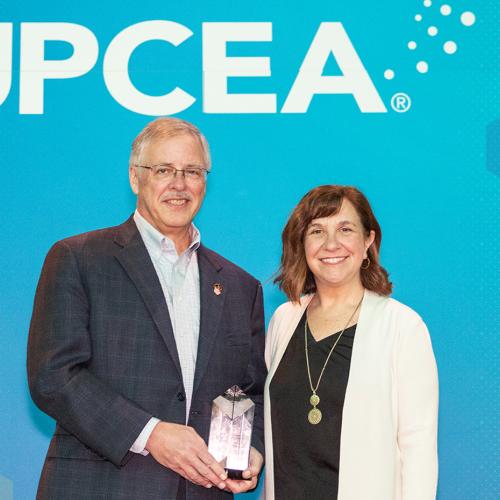The Role of Professional, Continuing, and Online Education Units in Shaping the Future of Higher Education

GTPE's dean, Nelson Baker, Ph.D, shared his views about the future of higher education in an article published in The EvoLLLution in May 2019.
We live in constantly changing times. Higher education needs to change at the same pace, so it can meet the needs of learners and workforces of tomorrow.
While reshaping a centuries’ old education model may seem daunting, it’s not an impossible challenge. In fact, some institutions are embracing education innovation. Georgia Institute of Technology, for example, recently released its Commission on Creating the Next in Education (CNE) report, an academic roadmap that defines the nature of education of the future and envisions what a technological research university will look like in 2040, Other higher education institutions are also doing notable work as we collectively recognize the need for sweeping change and new ways to fulfill our obligations to society
One of the leading drivers of change is the shift in demographics. Traditionally, higher education institutions have served students aged 18 to 24. However, the number of 18 year olds in the United States is shrinking amid declining birth rates and fewer high school graduates are choosing to attend college.
Further, people are living longer. This means people need to work longer to afford a comfortable and distinctly longer life than our parents or grandparents. The length of time in the workforce also implies a need for the employee to develop new skills and new knowledge.
As public universities, we have the obligation to serve all our citizens—not just the 18- to 24-year-old group we have focused on in the past. As new knowledge and technologies impact the work we do, our learners will look to us to help them to move forward in their careers.
New technologies and the digitalization of business processes are disrupting all industries and professions, leading to the need for us all, including graduates of prestigious STEM degrees, to continue learning.
The evolving work environment needs universities to keep pace with the demands of the entire workforce, rather than just focus on producing entry-level workers. Today’s workplaces need agile thinkers who can keep up with technology and navigate the changes it brings to their fields. They also need to be T-shaped thinkers who have deep expertise but also social breadth in terms of understanding the impact of their work on people’s lives. Additionally, in our digital world, digital skills are essential.
Embracing change is imperative for the survival of our professions, industries, organizations and jobs. Higher education is obligated to transform, innovate and reinvent itself to meet the learning demands of a new era. Clearly, our institutions need to expand to serve adult learners throughout their lifetimes, in addition to traditional 18- to 25-year-old college students.
How do universities need to adapt to address this shift?
Read the full story in The EvoLLLution

